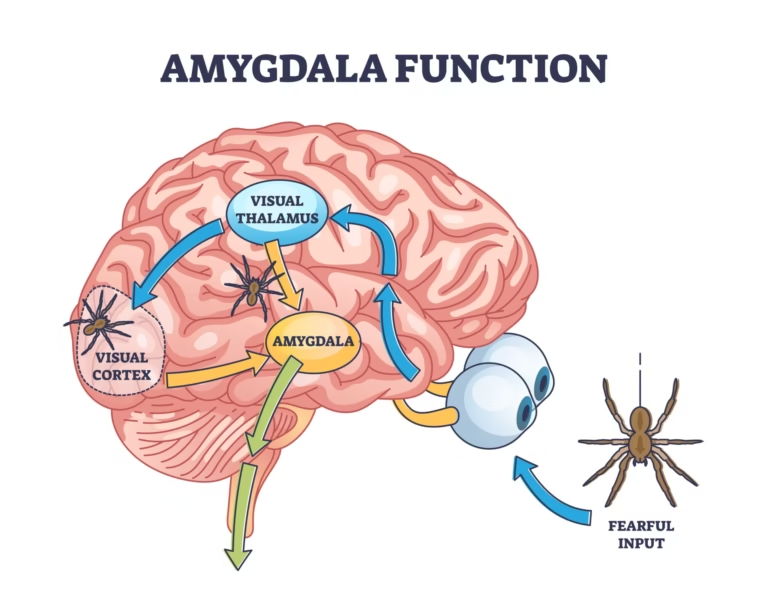Ever thought about what stress actually is?
It is nothing tangible or visible, surely we can recognize when someone is having stress; it tends to show in the gestures, words, tone of the voice, or that hopeless sinking of the face into the hands followed by a sigh…
„Stress is the way we interpret the energy coming in through our senses”
the key is word “interpret” informing us that stress is not outside of us. Outside of us are the things we tell ourselves are the cause of our stress like politics, mother in law, the way someone chews or a rainy day.
It can be everyone and everything and I´m sure you have your list of smaller and bigger triggers. That´s the energy part in the equation above.
How it all plays out in the body?
It starts in the brain, with the amygdala interpreting images and sounds coming in through our senses, if it perceives danger it sending a signal to hypothalamus that communicates the message throughout the body via our nervous system

Perceiving a threat the thalamus sends sensory information to the amygdala, triggering a fear response.
The amygdala activates the sympathetic nervous system, initiating our fight-or-flight reaction. It also signals the hippocampus to store memories of the fearful event so we can avoid similar threats in the future Source: simplypsychology
Nervous system – incredible communication center with two branches
1. Sympathetic nervous system or “fight or flight” response
When our external world gets interpreted as being stress-ful it is on. As a gas pedal it adds a burst of energy to respond to a perceived threat, releasing hormones into the bloodstream.
The hormones are preparing our body to fight or filght, we become tense as well as more alert. System such as immune and digestive are being shut off, because there´s no time to digest food if we are about to become someone’s food..
2. Parasympathetic nervous system or the “rest and digest”
On the contrary when our external world gets interpreted as being joy-ful, we get to revel in the rest and digest mode.
It’s calming the body and bringing balance after the danger has passed. The heart rate drops, muscles relax and digestive enzymes are released.
What one finds stressful might be thrilling to others
I’m terrefied of heights and even being close to the edge of a building can cause the stress-response in my body. On the other hand some people don’t have the slightest problem with it. By learning to “break-out of the cycle” by activating the parasympathetic nervous system, and reducing the effect of the sympathetic nervous system, we can reduce the stress on our body systems.
Part of it is can be taking few deeper breaths, having a regular meditation or yoga practice in order to become more mindful of the way our mind runs us and our body. Here´s a short and entertaining video about it:
Increasing the resilience and coming back into flow will not only make you a happier, more content person, it will also help to avoid many of the diseases associated with chronic stress.
Stress as Strength ? Science says yes!
It's a matter of mindset.
We tend to think of stress as something debilitating, something to avoid at all costs. But what if stress can be a source of strength, helping us rise to meet our challenges?
The following NSDR (form of yoga nidra guided meditation) incorporates the scientific findings of dr. Allia Crum about this powerful stress-mindset shift and how we can utilize stress instead of trying to eliminate it.
Even if you’re new to NSDR, this 20-minute guided meditation is easy to follow. Simply allow yourself to drift into a deep state of relaxation as you learn or get reminded of the importance of our mindset towards stress.
I’d like to hear your reflections if you decide to explore this mindset.
Thank you for reading.
This calming 20-minute NSDR is inspired by the science podcast from Dr. Andrew Huberman.

